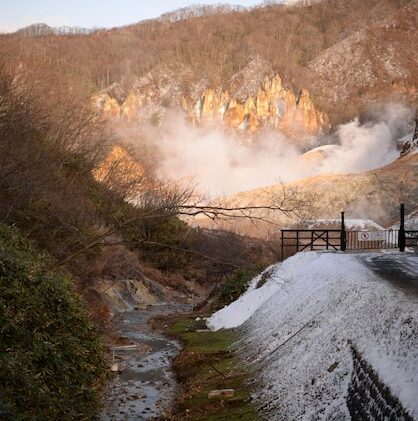Discovering Shirakawa-Go in 2025: Is It Worth Your Visit?
Located in the picturesque mountains of Gifu Prefecture, Japan, Shirakawa-go is a village that beckons travelers with its serene beauty and rich history. Renowned for its traditional gassho-zukuri farmhouses, this UNESCO World Heritage site offers an escape from Japan’s vibrant city life. The village is nestled in a valley framed by snow-capped mountains, presenting a rare glimpse of rural Japan. As we delve into the charm of Shirakawa-go, we’ll examine if it deserves a place on your travel itinerary in 2025.
The Unique Architecture of Shirakawa-Go
Shirakawa-go is primarily celebrated for its distinctive thatched-roof houses, crafted in the gassho-zukuri style. These structures are ingeniously designed to endure the region’s heavy snowfall, a testament to traditional Japanese craftsmanship. Some of these houses are over 250 years old, offering insights into Japan’s rural heritage.
In winter, the village transforms into a stunning winter wonderland, with a thick layer of snow blanketing the thatched roofs of the farmhouses. As spring approaches, flooding rice paddies reflect the sky, and the surrounding mountains transition from a white coat of snow to vibrant green hues. Autumn dazzles with brilliant reds and golds, enveloping the village in a colorful display that captivates visitors.
Winter Light-Up and Seasonal Activities
The enchanting Shirakawa-go Winter Light-Up, held on select evenings in January and February, further enhances the village’s magical ambiance. Amid the glow of illuminated gassho-zukuri houses, visitors are reminded of the village’s charm.
If you seek adventure, the surrounding mountains are perfect for hiking, especially during the warmer months. For those preferring lighter walks, the Ogimachi Castle Observation Deck is a mere 30-minute stroll away, offering breathtaking views over the village.
Experiencing Traditional Japanese Hospitality
A visit to Shirakawa-go wouldn’t be complete without experiencing traditional Japanese hospitality. Accommodation in the gassho-zukuri farmhouses ranges from ¥8,000 to ¥20,000 per person. This unique opportunity allows guests to immerse themselves in local life and connect with families who have resided in these homes for generations. However, it’s worth noting that the Minshuku (Japanese-style farmhouses) typically accommodate guests for a single night only, so longer stays may require moving between different houses.
Proximity to Larger Tourist Destinations
While Shirakawa-go is undoubtedly a stunning destination, it may not cater to everyone’s travel preferences. The village’s remote location can make access a bit complex, especially during winter when snow may hinder travel. Limited dining and accommodation options present another challenge, particularly when compared to larger nearby cities such as Kanazawa and Takayama.
Additionally, travelers might find that Shirakawa-go lacks a variety of activities typically offered at more popular tourist locations. However, if you value tranquility and possess an appreciation for history and traditional craftsmanship, Shirakawa-go could be the perfect getaway.
Planning Your Visit
For those contemplating a trip, the best time to visit Shirakawa-go is during the winter months when the village evolves into a peaceful setting draped in snow. Nevertheless, each season brings its own unique offerings: spring witnesses rice fields mirroring cherry blossoms, autumn showcases colorful Koyo foliage, and summer—albeit hot—can provide a quieter experience due to fewer visitors.
To enhance your experience, consider visiting early in the morning, during weekdays, or in the shoulder seasons to enjoy a more tranquil atmosphere.
Getting to Shirakawa-Go
Traveling to Shirakawa-go from major urban centers like Tokyo and Kyoto requires some planning, but it’s relatively straightforward. Travelers can take trains to Omiya station, which continue to Toyama before switching to a bus that leads directly to the village. From Takayama, Nohi Bus services reach Shirakawa-go in approximately 50 minutes, while buses from Kanazawa take about 1.5 hours.
Where to Stay: Authentic Experiences Await
For a genuinely authentic experience, opt for accommodations in one of Shirakawa-go’s gassho-zukuri houses. For example, Koemon, a gassho-style house dating back to around 1800, is a fantastic choice. Guests can enjoy dinner served around a traditional sunken hearth, immersing themselves in the village’s rich culture.
For a more luxurious stay, Shiroyamakan is situated by the Shō River, just 1km from Shirakawa-go’s Historic Villages. This Japanese Inn features Kiso hinoki baths crafted by artisan Shuji Nakawa, perfect for unwinding after a day of hiking.
Conclusion: Shirakawa-Go Awaits
In conclusion, Shirakawa-go offers visitors a rare glimpse into Japan’s rural heritage against a backdrop of stunning natural beauty. Although its remote location and limited amenities may not suit everyone, those in search of peace, solitude, and a deep appreciation for traditional craftsmanship will find it worth the journey. As travel patterns evolve, Shirakawa-go stands as a reminder of Japan’s rich cultural tapestry, inviting you to explore its unique charms in 2025 and beyond.
For more travel guides and itineraries, consider subscribing to the weekly Views from Japan newsletter, which features lesser-known destinations that inspire meaningful travel experiences.





